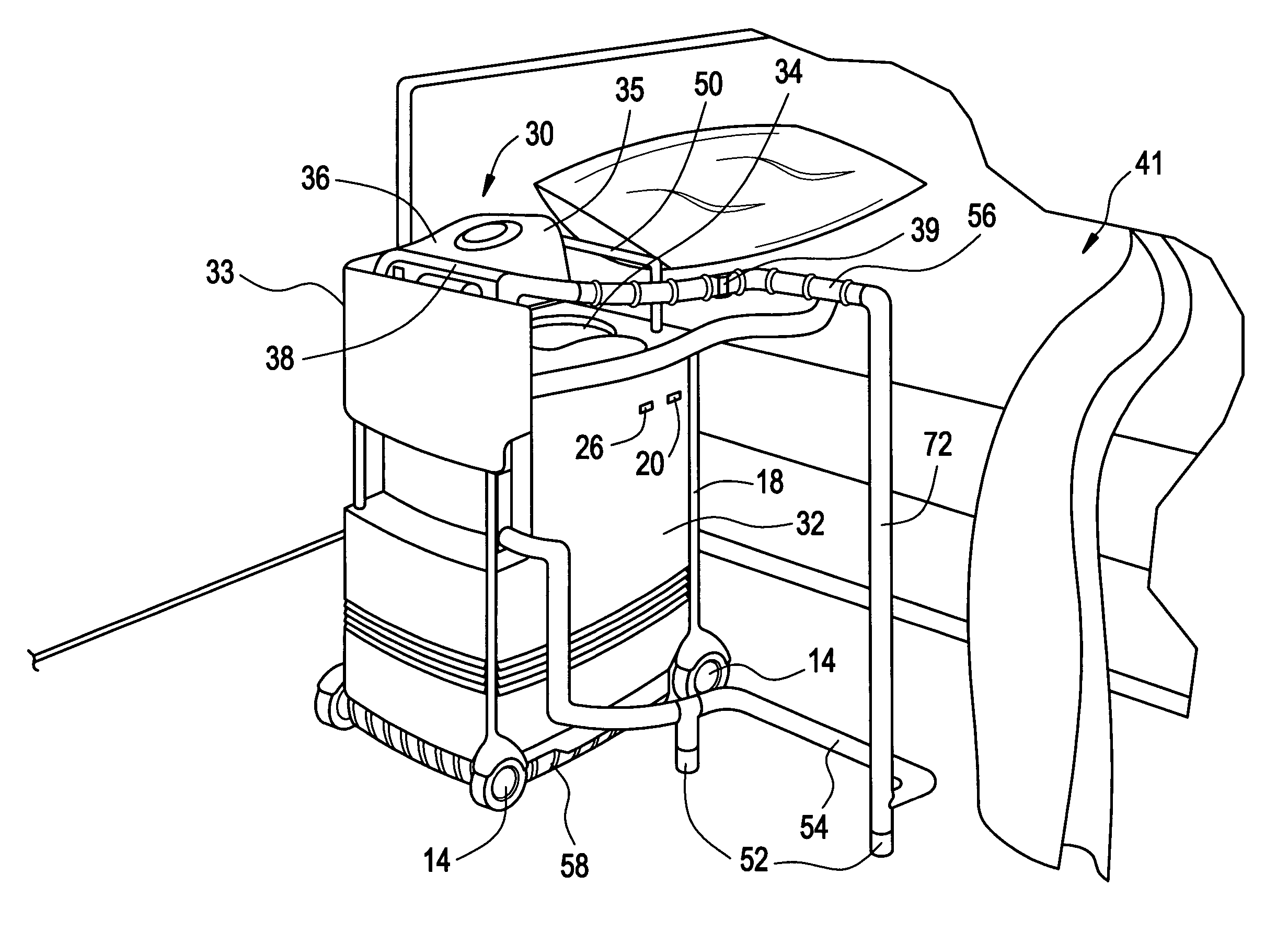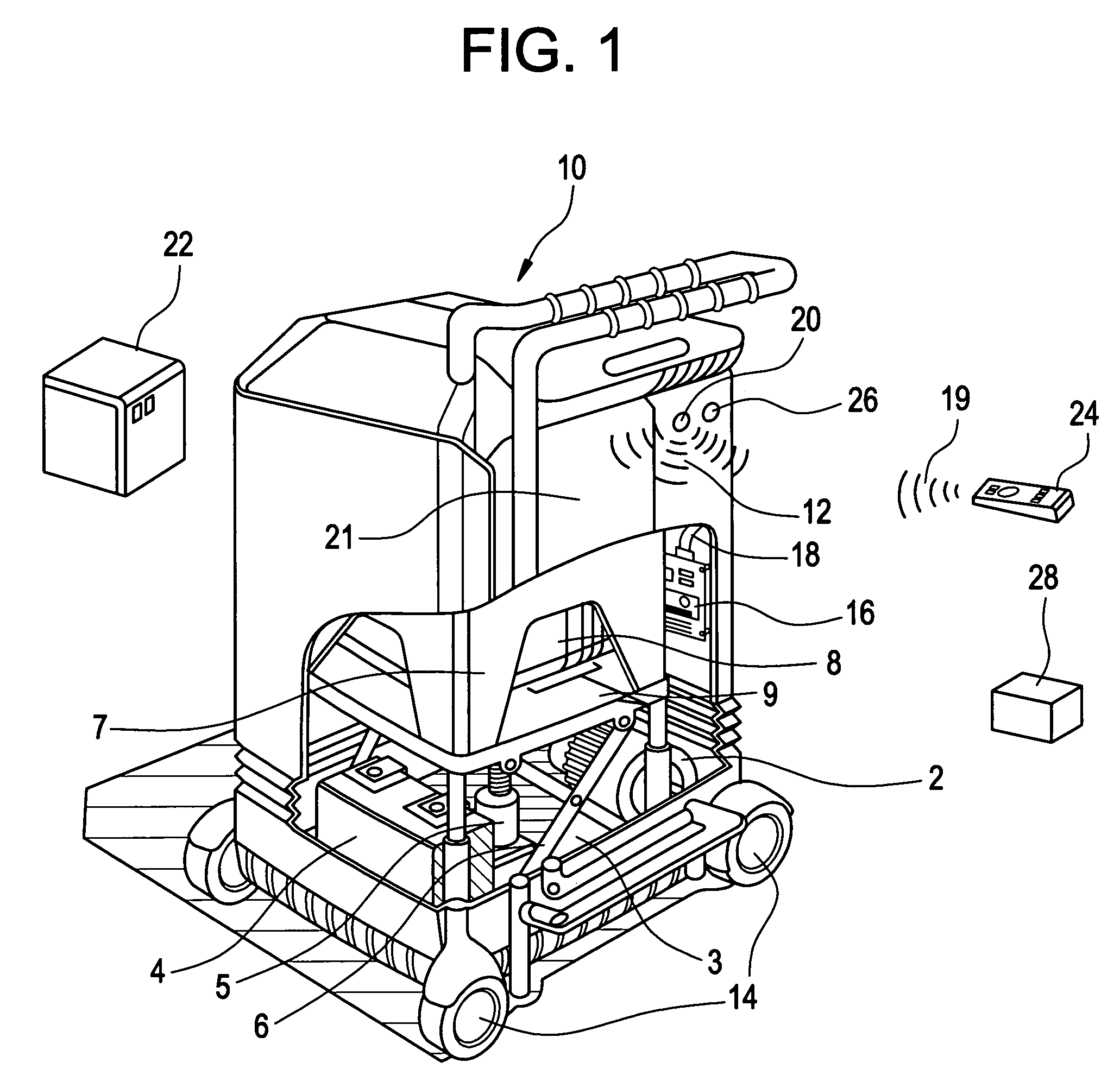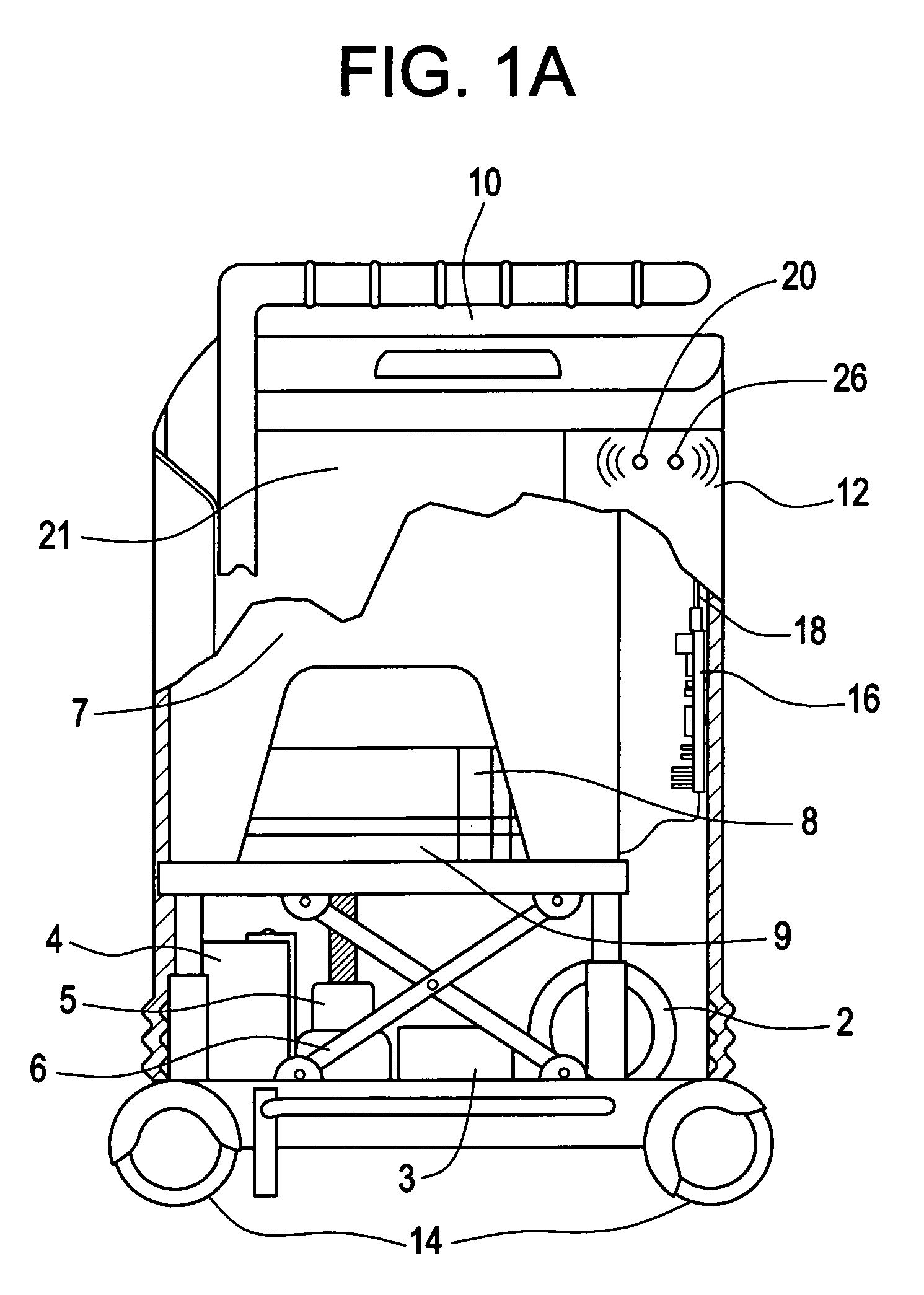Mobile equipment for non-ambulatory people
a technology for non-ambulatory people and equipment, applied in the field of mobile equipment, can solve the problems of not being able to provide the most hygienic arrangement, not being able to reach other items in the room, and being difficult to monitor the patient, so as to enhance the individualized effect of healthcare monitoring
- Summary
- Abstract
- Description
- Claims
- Application Information
AI Technical Summary
Benefits of technology
Problems solved by technology
Method used
Image
Examples
Embodiment Construction
[0023]The present invention provides a new and improved apparatus for aiding a non-ambulatory person, created by using single-use features of a piece of equipment to make that equipment accessible to the user without need for other assistance and more useful to the healthcare provider / caregiver.
[0024]A mobile programmable device 10, as shown generally in FIGS. 1 and 1A, includes a unit 12 having at least one movable member 14 operatively attached to the unit 12. A user may operate a control 24, which sends an outgoing signal 19 to the unit 12. The unit 12 also may include an information storage unit 16, a signal receiving unit 18 for accepting an incoming signal 19 from the control 24 or a main station 22 and a signal transmitting unit 20 for sending an out going signal 21 to the main station 22. Further, this equipment may include sensor 9 that transmits information about the equipment status to the information storage unit 16. The unit 12 further may include a homing device finder...
PUM
 Login to View More
Login to View More Abstract
Description
Claims
Application Information
 Login to View More
Login to View More - R&D
- Intellectual Property
- Life Sciences
- Materials
- Tech Scout
- Unparalleled Data Quality
- Higher Quality Content
- 60% Fewer Hallucinations
Browse by: Latest US Patents, China's latest patents, Technical Efficacy Thesaurus, Application Domain, Technology Topic, Popular Technical Reports.
© 2025 PatSnap. All rights reserved.Legal|Privacy policy|Modern Slavery Act Transparency Statement|Sitemap|About US| Contact US: help@patsnap.com



